Variations of Our Solution (I)
VAR 

|
|
|
Connecting at |
|
|
|
He might try to weaken White's shape with a move at |
|
|
|
And, instead of completing it with |
| |
| |
|
|
|
Had White connected at |
| |
| |
| |
|
Semeai Variation: Without both throw-ins, White did not get Black's two sacrificed stones, but did get a prisoner, and two points of territory ( Had White - in the hanezeki - connected at the lower cutting point ( |
Conclusion:
But, because these two additional points are not really needed there, it is difficult to decide which are the "technically correct" moves.
We decided to keep both throw-ins in our solution - with the change in the order of | |
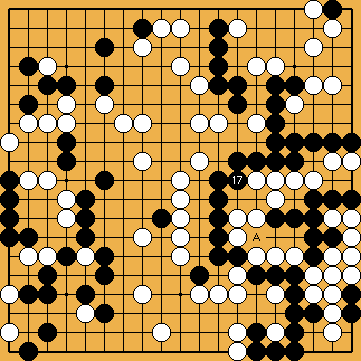
 71
71 . !!!
. !!! 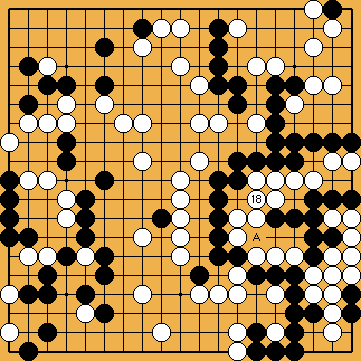
 : (A
: (A  77
77 , instead, may result in a loss of one point of territory in the Semeai Variation, which does not affect the result decisively. But Black also has the opportunity of choosing Joachim's Ko-Semeai, turning this alternate move into a decisive mistake (
, instead, may result in a loss of one point of territory in the Semeai Variation, which does not affect the result decisively. But Black also has the opportunity of choosing Joachim's Ko-Semeai, turning this alternate move into a decisive mistake ( 995
995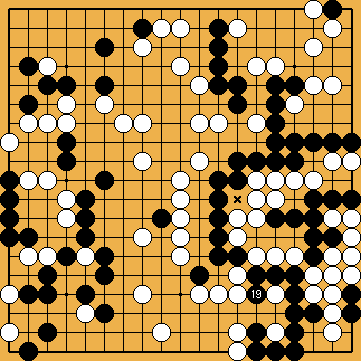
 :
: , directed towards the hanezeki.
, directed towards the hanezeki.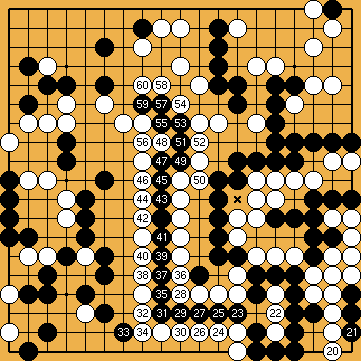
 : (60
: (60  , before continuing with the procedure explained below.
, before continuing with the procedure explained below.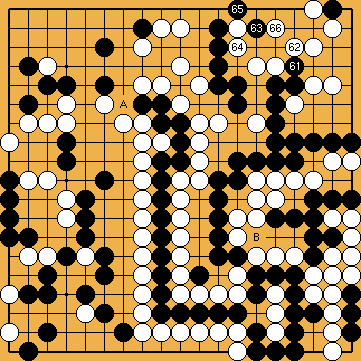
 : (A
: (A  , but without ever intending to play a throw-in at
, but without ever intending to play a throw-in at  , will end fatal for Black.
, will end fatal for Black.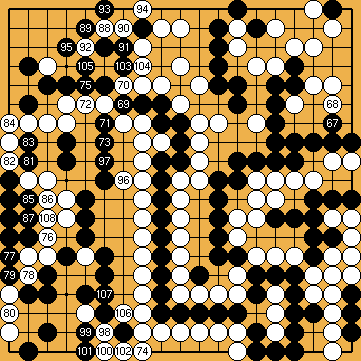
 : (69
: (69  -
-  , instead.
, instead. , choosing Joachim's ideas of either the hiki of
, choosing Joachim's ideas of either the hiki of  on the upper edge, or the capturing move of
on the upper edge, or the capturing move of  , on the left side. However, there is the other side of the coin of doing without the double throw-in, which will prevent Black from being successful.
, on the left side. However, there is the other side of the coin of doing without the double throw-in, which will prevent Black from being successful.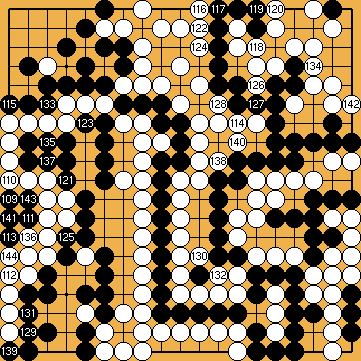
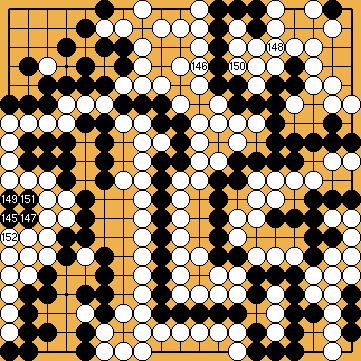

 :
: in our solution (
in our solution (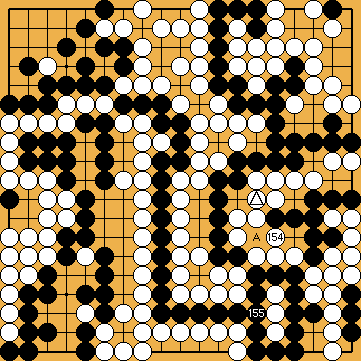
 : (155
: (155  , both variations would end with the same result.
, both variations would end with the same result.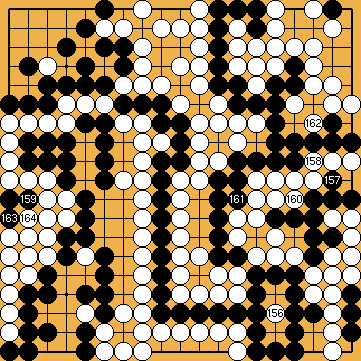
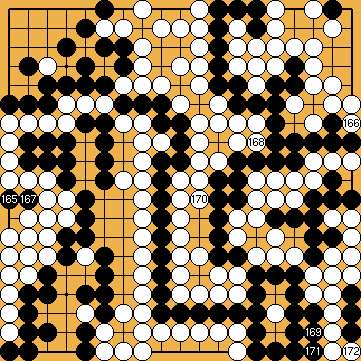
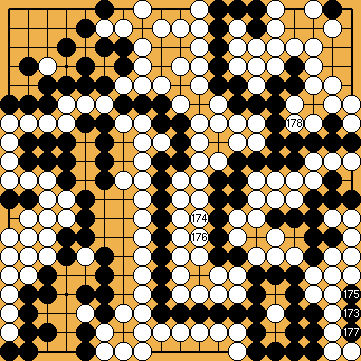
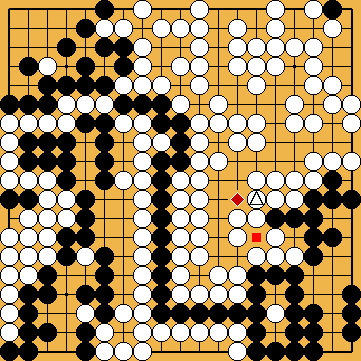
 ,
,  ), instead. So her result is one point better than in our solution, and the game ends with two points for Black.
), instead. So her result is one point better than in our solution, and the game ends with two points for Black.
